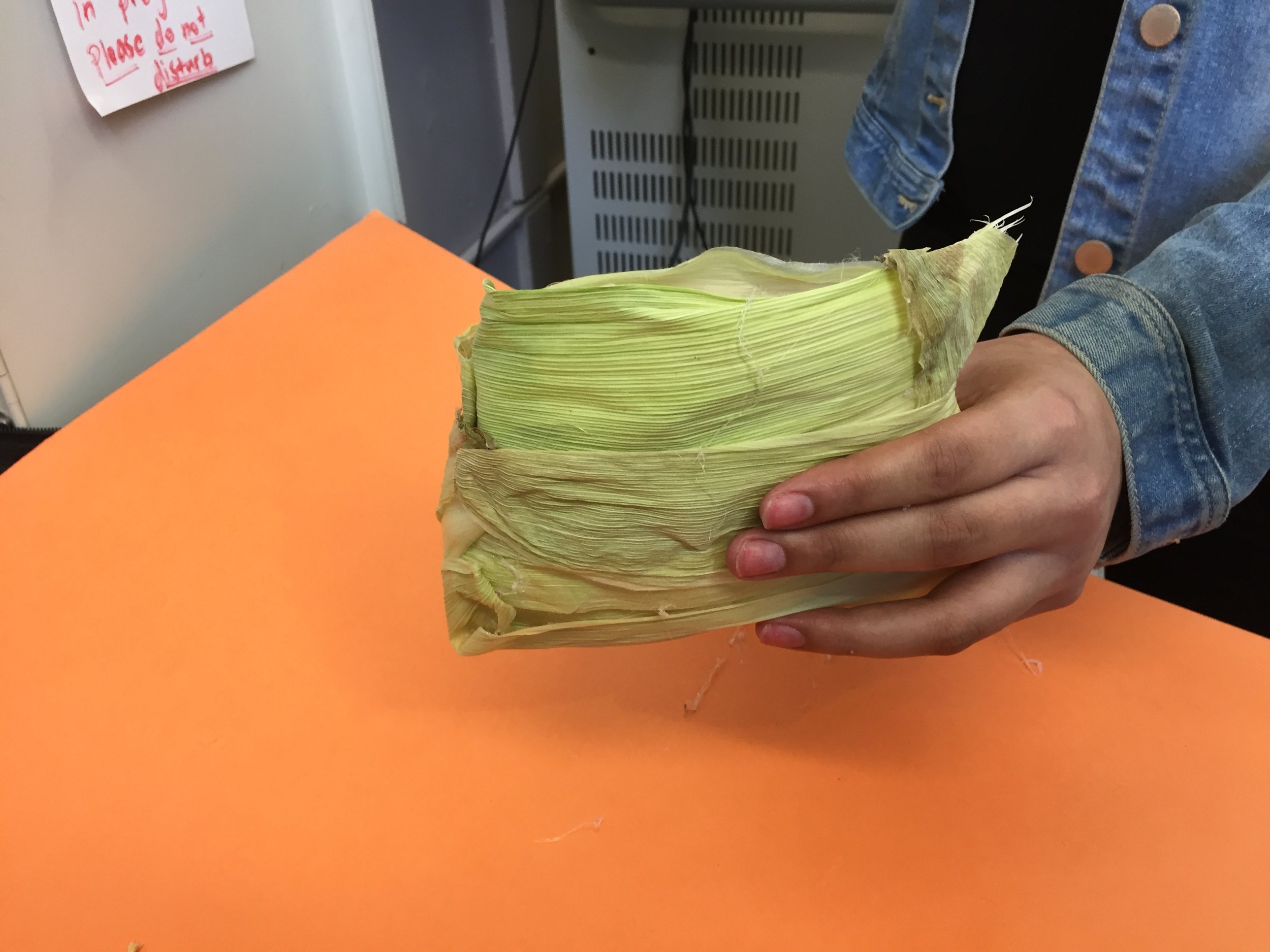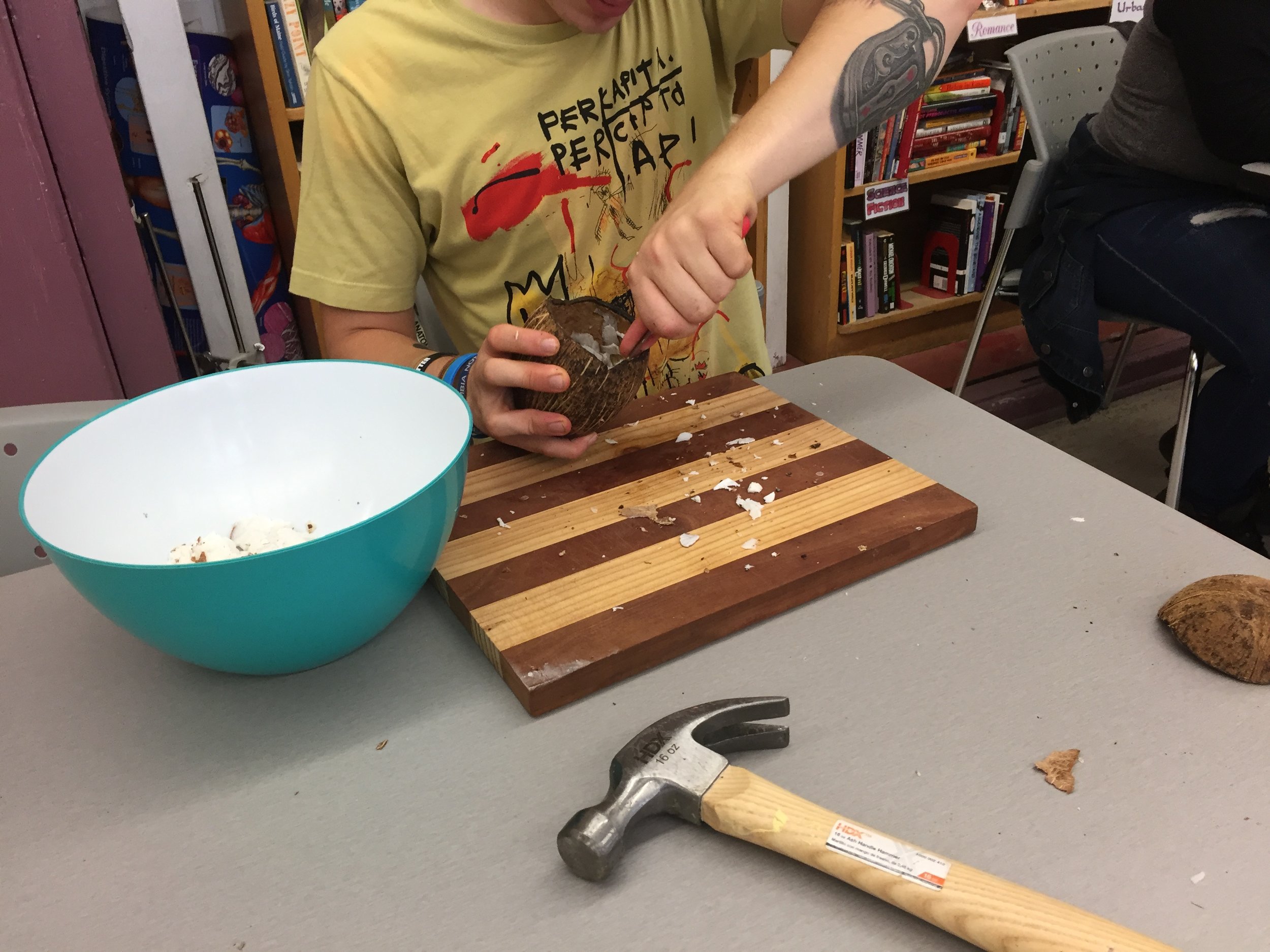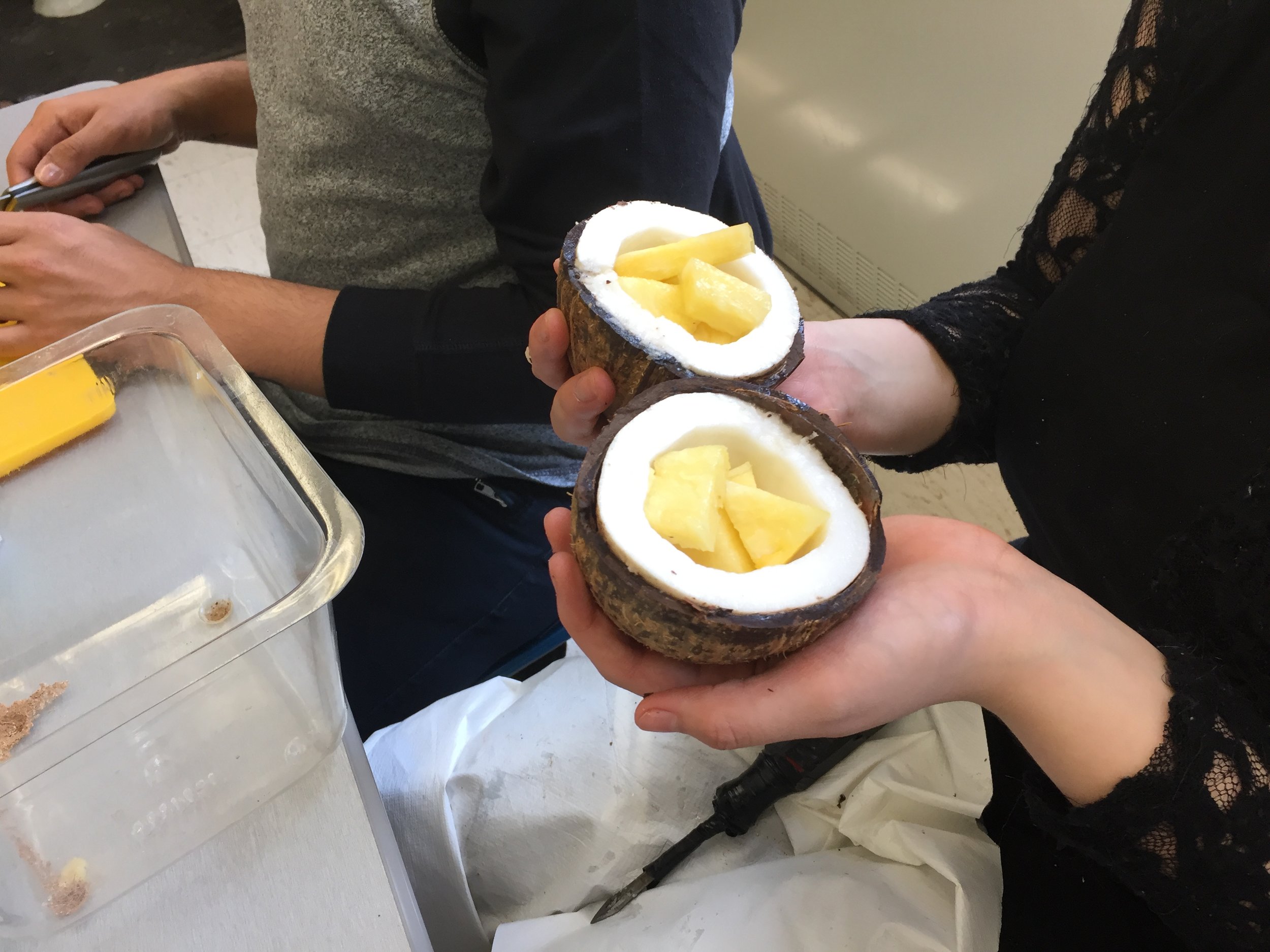Our students are tackling real issues in the food industry by designing innovative, sustainable methods for packaging food.
The students have been working in groups for about three weeks, creating prototypes of biodegradable packages for specific food items. Aside from being biodegradable, the designs need to be strong, long lasting, and able to properly preserve the food items they hold. Some groups took the challenge a step further, and created packaging that not only holds the food item, but is essential to the aesthetic of the product as a whole. Check out their incredible designs below!




Coincidentally, the New York Times recently published an article entitled, "Packaging Food With Food to Reduce Waste." The article cites Ecovative (a company that the class actually studied), which is creating packaging from fungal mycelium. A number of other organizations are running with similar concepts - Biocopac Plus aims to replace BPA with tomato peels; Shrilk combines left over shrimp shells with silk to produce a substitute for plastic wrap, and Ohoo is a liquids container made out of seaweed.
Although it sometimes seems that we are surrounded by unnecessary plastic packaging - in food, product shipment, etc. - it is reassuring to know that this issue is a high priority for many organizations - and students!
